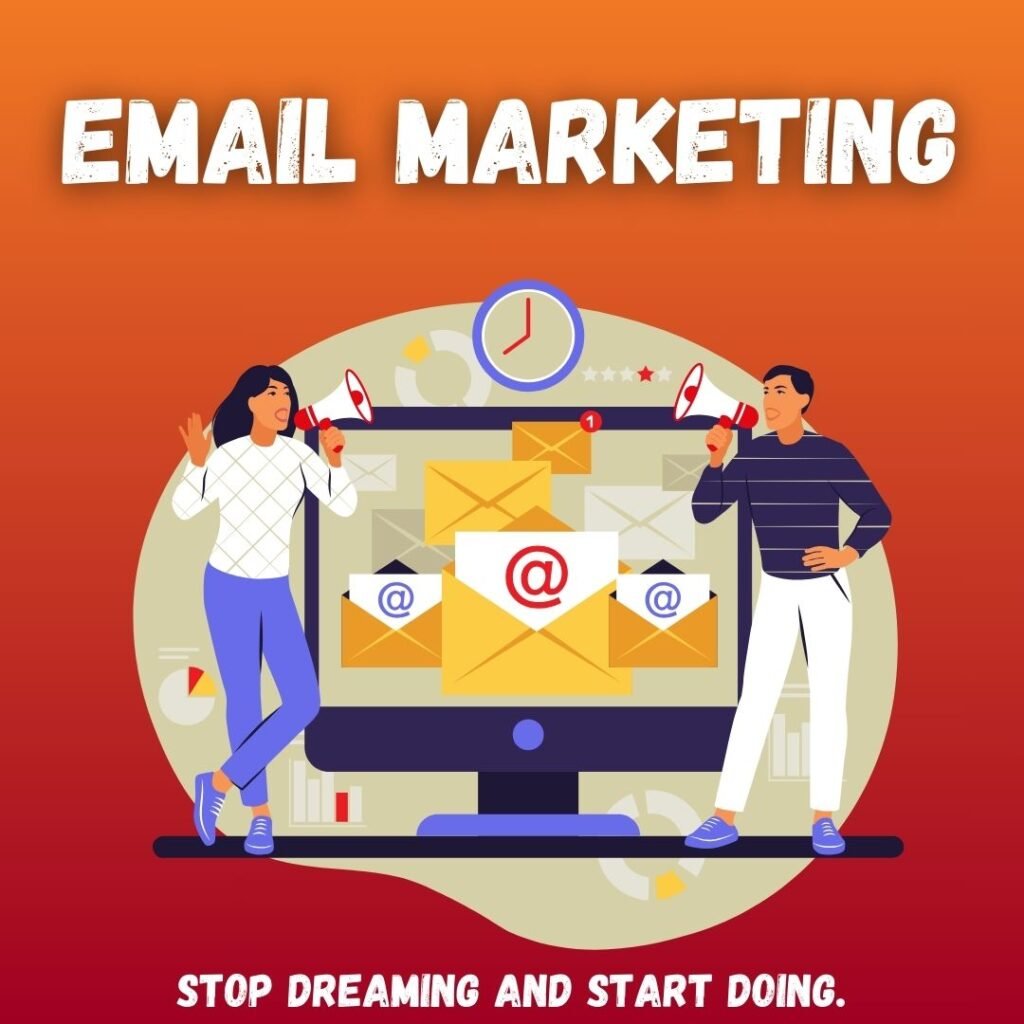In the ever-evolving digital world, email remains a dominant force. Whether you’re a small business owner, startup founder, or marketing professional, understanding how to use email effectively can be the difference between average engagement and explosive growth. This guide will walk you through the essential building blocks of a successful email campaign — from growing your list to analyzing results — helping you build a winning email marketing strategy.

Why Email Still Dominates
Email is one of the oldest digital communication channels, but it’s still one of the most effective. With over 4.6 billion global email users expected by 2025, brands have an incredible opportunity to speak directly to their audience.
- Cost-effective: Compared to social media ads or paid search, email offers a better return on investment (ROI).
- Personalized communication: You can tailor emails to match user behavior and preferences.
- Automation: Once set up, your campaigns can run themselves — bringing results while you sleep.
1. Building Your Email List
It all begins with your list. Don’t buy contacts — instead, build an authentic audience who wants to hear from you. Here’s how:
- Lead magnets: Offer something valuable (like a free guide or discount code) in exchange for an email address.
- Signup forms: Place forms strategically on your website, blog, and landing pages.
- Pop-ups and exit intent: Capture attention before users leave your site.
A healthy email list is the foundation of a strong email marketing strategy. Focus on quality over quantity.
2. Choosing the Right Tools
Today’s marketers have access to a range of powerful platforms that make it easier than ever to manage campaigns. Top email marketing tools in 2025 include:
- Mailchimp – Great for small businesses
- HubSpot – Ideal for scaling companies with CRM needs
- ConvertKit – Popular with creators and bloggers
- Klaviyo – Tailored for eCommerce
These tools offer automation, A/B testing, mobile-friendly templates, analytics, and segmentation options — all critical components of a modern email marketing strategy.
3. Writing Emails That Convert
It’s not just what you send — it’s how you say it. Great content builds trust and drives action. Keep these principles in mind:
- Subject Line: The gateway to your content. Keep it short, intriguing, and relevant.
- Email Body: Use clear, concise language. Break up content into short paragraphs, bullet points, or visuals.
- CTA (Call to Action): Every email should have one clear action you want the reader to take — clicking a link, registering, or making a purchase.
Consistency in tone, branding, and visuals strengthens your connection with readers and elevates your email marketing strategy.
4. Segmentation and Personalization
Gone are the days of one-size-fits-all email blasts. Modern email tools allow you to segment your audience based on demographics, behavior, purchase history, or engagement levels.
Example segments include:
- New subscribers
- Past customers
- Cart abandoners
- High-value clients
By tailoring your content to each group, your emails become more relevant, leading to higher open and click-through rates.
5. Automate Smartly
Automation is the backbone of scalable marketing. Consider setting up:
- Welcome Sequences: Greet new subscribers and introduce your brand.
- Drip Campaigns: Deliver educational or promotional content over time.
- Re-engagement Emails: Target inactive subscribers with a compelling reason to return.
Automation ensures timely, relevant communication, and strengthens your email marketing strategy without overwhelming your team.
6. Measure, Learn, Improve
No strategy is complete without tracking performance. Focus on metrics like:
- Open Rate: How many people open your email.
- Click-Through Rate (CTR): How many click on links inside.
- Bounce Rate: How many emails didn’t reach inboxes.
- Unsubscribe Rate: How many people opt out.
Use A/B testing to experiment with subject lines, CTAs, and send times. Over time, data will help refine and sharpen your email marketing strategy.
7. Stay Compliant
Email marketing is powerful, but it must be used responsibly. To stay compliant:
- Collect explicit permission before sending emails.
- Include an unsubscribe option in every email.
- Follow regulations such as GDPR, CAN-SPAM, and CASL based on your region.
Trust is key to long-term email success.
What’s Next for Email in 2025?
The future of email lies in smart technology and deeper personalization. Trends to watch include:
- AI-driven personalization: Real-time content tailored to user behavior.
- Interactive emails: Clickable content like polls and product carousels.
- Omnichannel integration: Seamless transition between email, SMS, and social.
As consumer expectations rise, your email marketing strategy must evolve to remain effective and engaging.
Final Thoughts
Email isn’t just a tool — it’s a relationship builder. By learning the fundamentals and applying them consistently, you can create a powerful channel that not only boosts sales but also deepens brand loyalty. Start small, stay consistent, and always put value first.
If you’re ready to turn emails into conversions, now is the time to invest in your email marketing journey.
Need help crafting a high-converting email marketing strategy?
Contact Digify Pro — your digital growth partner!



